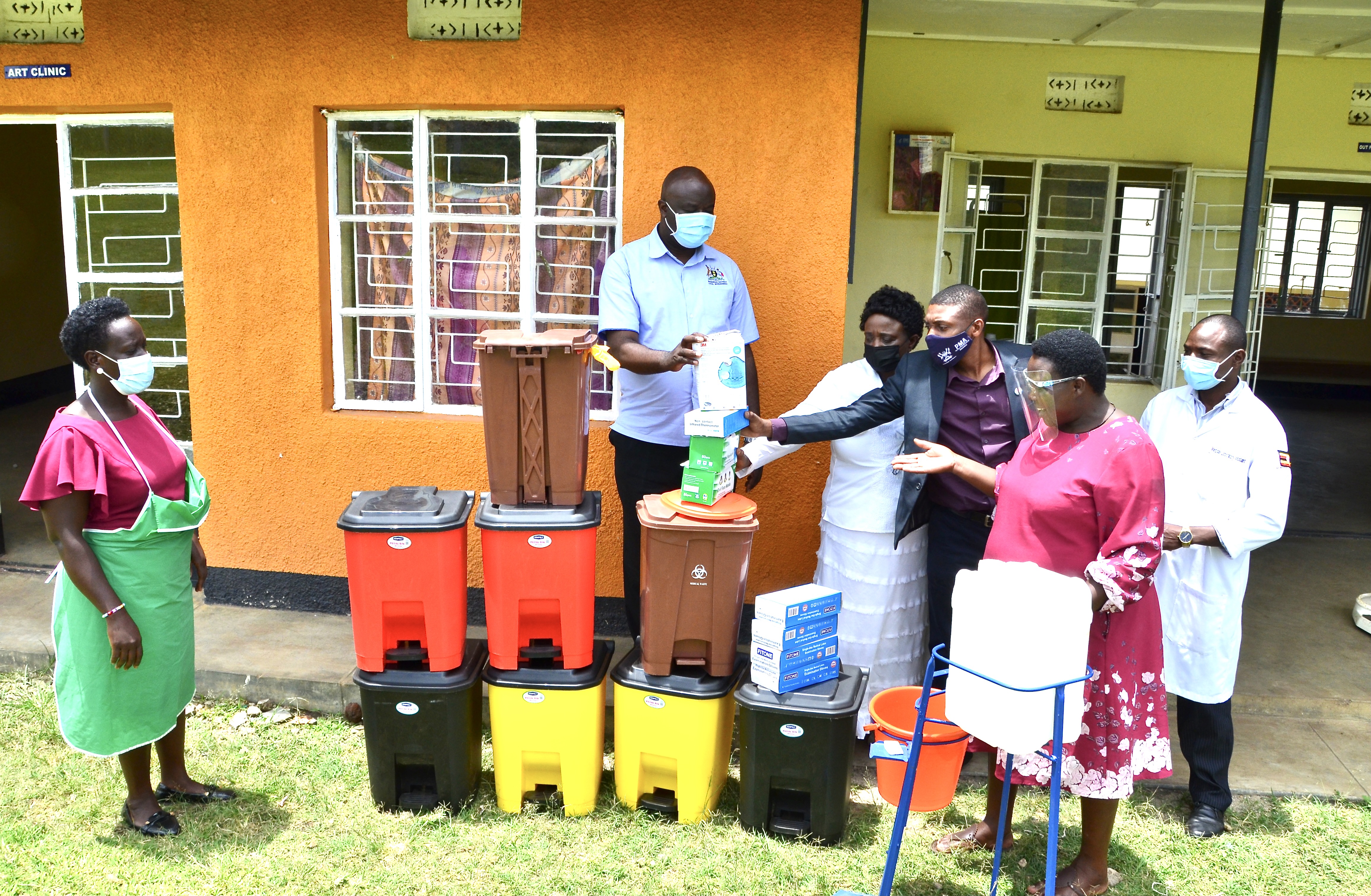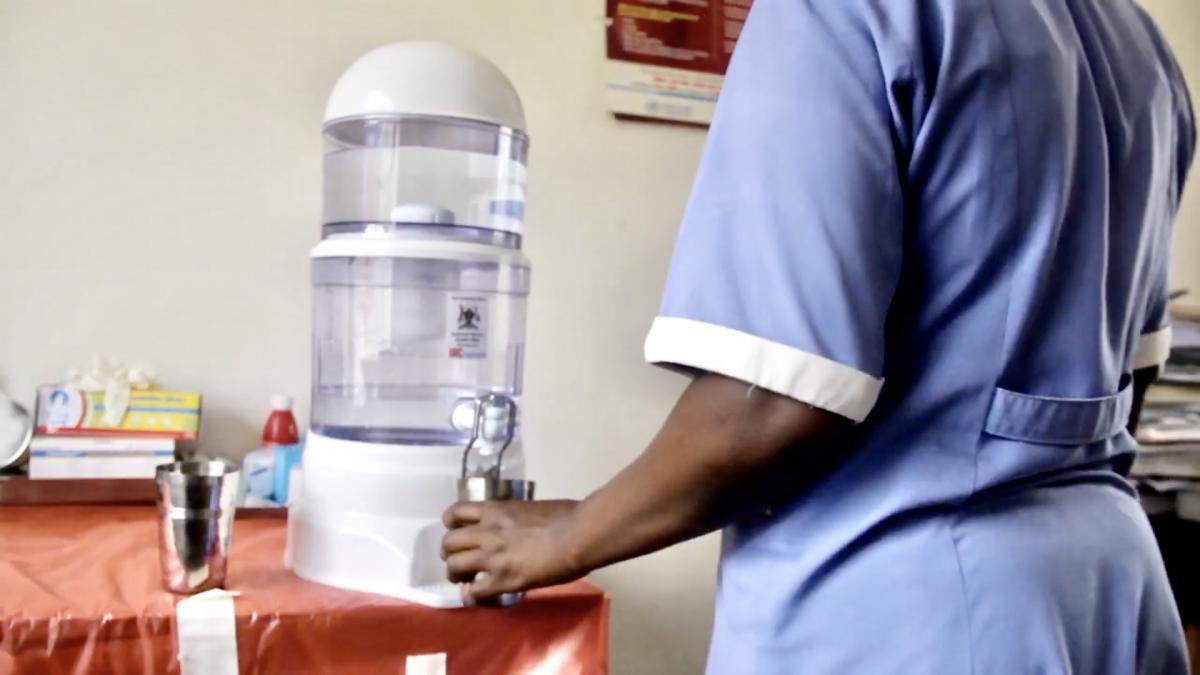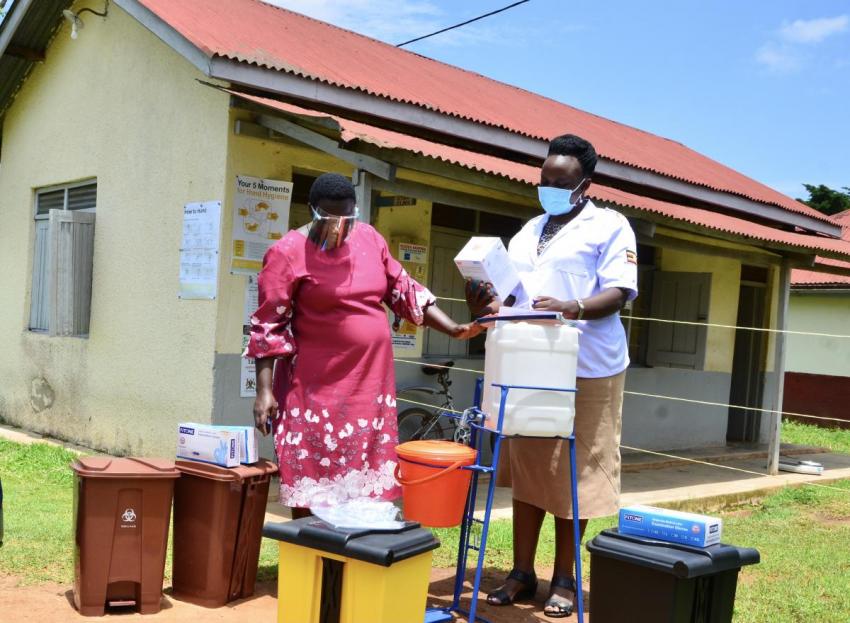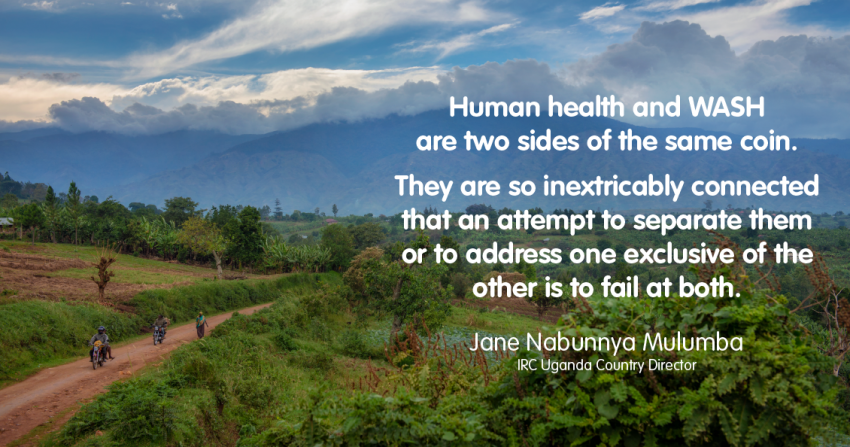IRC Uganda leads interventions to advance urgent improvements to the state of healthcare facilities in Uganda
Published on: 03/05/2021

Life starts and thrives on water, that is uncontested. The paradox for Uganda is that in healthcare facilities – where lives are treated, and mended - safe and adequate water supply has least priority.
The World Health Organization (WHO) has defined minimum standards for water quality, quantity and access that should be available for clients and health workers - at least 5 litres per person per visit, of quality that is safe for drinking, full-time supply on site; easy access for sanitation and cleaning the health facility environment; handwashing stations at critical points of care and washrooms for menstrual hygiene management.
Short of these basic standards, healthcare facilities fail on their core purpose and ultimately fail to deliver quality of life for a productive population and socio-economic development.
The situation of WASH in Healthcare Facilities [HCFs] faced by Kabarole district; its challenges and opportunities.
The Government of Uganda has the mandate to deliver health services to the people, through its decentralised units – the district local governments. Yet, the financial authority remains with the central government which dispenses conditional block grants that are not aligned to make specific allocations to water, sanitation and hygiene within the health facility.
The health sector Budget Framework Paper (BFP) for FY 2018/19 – FY2022/23 which aligns resources to sector efficiency lists up to thirteen priorities, including public health promotion, human resource and staff performance, health management information systems and healthcare financing, to mention some. Water supply, sanitation and hygiene services within the health facility do not feature at all.
This kind of planning undermines the promise defined through national standards for health infrastructure, that every health facility must have a functioning source of safe water located on the premises that is adequate to meet all demands for drinking, personal hygiene, medical interventions, cleaning, laundry, and cooking (Service Standards and Service Delivery Standards for the health sector in Uganda, Ministry of Health, 2016).
With no targeted funding for WASH services in healthcare, the same facilities that ought to save lives are to put it mildly, a den of disease and a death trap.

Patient waits to be treated in Kabarole.
Kabarole's population of about 330,000 people is served by 42 health facilities (Kabarole District Development Plan, 2016 – 2020). An assessment of the state of WASH in healthcare facilities carried out by Kabarole District Local Government in collaboration with Centers for Disease Control and Prevention [CDC], IRC and Mountains of the Moon University, reveals enormous gaps in water supply, sanitation, hygiene, and environment conditions of 40 healthcare facilities.
"Many health facilities rely on rainwater harvesting for their water supply; it is not reliable during the dry season. The alternative is to fetch from sources outside and far from the facility. Some depend on tank-stored water for the rest of the year, which gets contaminated and unsafe for drinking," said Cecilia Birungi, the District Health Inspector, Kabarole.
Some health facilities had on-site supply but no access inside the patient rooms, had broken storage tanks and did not consistently provide treated water for drinking. Health workers and cleaning staff reported that the lack of water put their lives at risk of infection and was a hindrance to managing flush toilets and latrines. Some facilities could not afford to hire dedicated staff to treat water through boiling, nor to install labelled containers distinguishing drinking from handwashing water.
Handwashing facilities were not enough and were not consistently refilled with clean water and lacked soap. Hygiene supplies, particularly gloves and alcohol-based hand rub, were in short supply exposing the workers to infection especially at critical patient-care points such as when giving injections and collecting blood samples.

Safe drinking water stations. One of many water and sanitation interventions aimed at improving conditions in vital community health care centers across the district.
Numerous assessments of healthcare service performance in Uganda are graded on indicators including staffing, presence of qualified healthcare staff, waiting time, and drug supply. Water, sanitation and hygiene are not considered as core indicators in healthcare service studies. Duty bearers in turn respond with increased investment in construction, bed capacity, drug supplies and advanced medical technology, while ignoring installation and maintenance of basic water sanitation services
COVID-19 has amplified the urgency of water in healthcare, hand hygiene through washing hands with soap and running water or sanitising with alcohol-based hand rub have been the main defence to control the spread of the corona virus. Deliberate actions by Kabarole leadership and partners on WASH in healthcare facilities helped the district to respond quickly and efficiently to the COVID-19 crisis.
Beyond the funding mobilised for Personal Protective Equipment (PPE) through the Ministry of Health to the district task force, IRC responded with holistic and sustainable interventions: latrines in 12 health care facilities were renovated to meet the standards of privacy, stances separated by gender, staff and clients, washrooms, handwashing points, cleanable floors and walls and accessibility for people with disabilities.
Collaboration with the Uganda Infectious Diseases Institute (IDI) resulted in locally produced alcohol-based hand sanitiser, supplying 30 health care facilities. Hand hygiene adherence increased from 5% in 2018 to 25% in 2020.
"We found it meaningless to provide hand sanitiser and walk away, without solving the consistent problems of water, sanitation and hygiene once and for all. We have now rolled out an intensive project on WASH in healthcare facilities in Kabarole. We are carrying out health promotion campaigns, installing wash basins with running water within patient and treatment rooms, constructing sanitation facilities, providing drinking water stations and equipment for environmental hygiene to model at least 5 healthcare facilities to the standard prescribed by WHO," says Jane Nabunnya Mulumba, Country Director IRC Uganda.
Through a succinct District WASH Masterplan (2018 – 2030), Kabarole is trailblazing on resource mobilisation for an ambitious target to deliver 100% coverage of WASH services for all by 2030. Specifically, the district is aiming for access to safely managed water services on premises for all health centre IIIs; separate toilets for patients, and staff (with gender segregation); patient/toilet ratio of 25 to 1; handwashing facilities with soap and water; improved sanitation facilities with provisions for menstrual hygiene and washrooms for patients; and waste management infrastructure with provision for waste segregation, effective disposal, placenta pits, and incinerators.
For Kabarole, data from the assessment has provided the missing perspective on the link between water and sanitation services to the quality of life and ultimately to the wholistic socio-economic transformation of its population.

Cecilia Birungi, District Health Inspector hands over personal protective equipment to local healthcare facility.
More recently, in an effort to further combat COVID-19 and other hygiene related infections, 54 healthcare facilities in Kabarole received an assortment of hand and environmental hygiene equipment and Personal Protective Equipment (PPE) supplies.
The initiative ensures delivery of critical care and safety of healthcare workers beyond emergency response. "COVID-19 seems to be settling with us one year along, instead of going away as the whole world hoped. It is no longer an emergency. We are therefore responding to the prevailing and persistent need for healthcare workers' safety while at work: we have provided handwashing facilities, hand sanitiser, medical waste bins, aprons, masks and other protective gear to all healthcare facilities in the district, both government and private," declares Martin Watsisi, Regional WASH Advisor at IRC Uganda. This provides crucial relief to overburdened healthcare centres, but much more still needs to be done.
NTV Uganda reports on the distribution of PPEs led by IRC Uganda.
The efficiency of a healthcare system rests on the WASH services therein and sub-standard services will drive clients away. Investment, both public and private should be deliberately directed to ensuring that clean and safe water supply, sanitation and hygiene are available in every healthcare facility in Uganda.

The work by IRC and its partners on WASH in healthcare facilities in Uganda is delivered under collective action of the Safe Water Strategy of the Conrad N. Hilton Foundation.